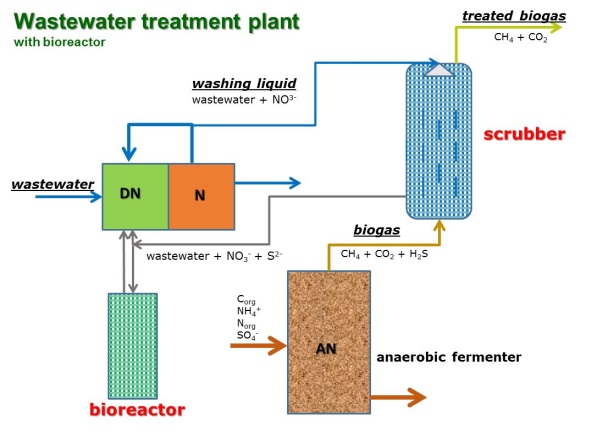
Dana Pokorna
University of Chemistry and Technology, Czech Republic
Title: Biogas desulfurization by autotrophic denitrification – temperature dependence
Biography
Biography: Dana Pokorna
Abstract
Biogas utilization is complicated when it contains hydrogensulfide coming from reduction of sulfur compounds during anaerobic digestion. There are many methods for desulfurization of biogas, but biological one based on activity of sulfur bacteria are advantageous from ecological and economical points of view. Our research was focused on the removal of hydrogensulfide from biogas by water scrubbing and on the treatment of washing liquid in a separate bioreactor with sulfur bacteria. The bioreactor was packed with a plastic carrier for immobilization of bacteria and operated in upflow mode so that sulfates were the final forms of sulfur. These bacteria can use oxygen or nitrates as electron acceptors during oxidation of sulfides and both oxidizing agents were studied. Process efficiency depends mainly on sulfide loading rate, dosed amount of oxygen, molar ratio S/N when nitrates were used, pH and temperature. In the case of nitrates addition bacteria of genus Paracoccus, Thiobacillus denitrificans and Thiobacillus thioparus were detected in biomass by FISH analysis. According to literature, the bacteria of genus Paracoccus have optimum for growth at high pH 6.5 – 10.5 and this fact was confirmed by our study, where bioreactor operation was stable and effective at pH over 10. Molar ratio S/N, which influences end products of autotrophic denitrification, has been set on value 0.55. The dependence of the process efficiency on temperature was studied for three temperatures: 20 °C, 25 °C and 30 °C and the highest loading rate of sulfides (350.9 mg·L-1·d-1) and N-NO-3 (258.6 mg·L-1·d-1) with sufficient efficiency was reached at temperature 30 °C. Our research has demonstrated the suitability of biological desulphurization of biogas in the external packed bed reactor with immobilized sulfur bacteria with oxygen and nitrate as oxidizing agents. Especially, desulfurization with nitrates can be advantageously included as autotrophic denitrification in the wastewater treatment line.

Recent Publications:
- Angelidaki I., G. Luo, and P. Kougias (2015). "Simultaneous hydrogen utilization and biogas upgrading by anaerobic microorganisms." Proceedings of 14th World Congress of Anaerobic Digestion, Viña del Mar, Chile, 15-18.11.2015, 2. biogas upgrading
- Díaz I., N. A., C. Pérez and F. Fdz-Polanco (2015). "Application of membrane modules to improve mass transfer for the chemoautotrophic biogas upgrading." Proceedings of 14th World Congress of Anaerobic Digestion, Viña del Mar, Chile, 15-18.11.2015.
- Gahleitner, G. (2013). "Hydrogen from renewable electricity: An international review of power-to-gas pilot plants for stationary applications." International Journal of Hydrogen Energy 38(5): 2039-2061.
- Luo, G. and I. Angelidaki (2013). "Co-digestion of manure and whey for in situ biogas upgrading by the addition of H2: Process performance and microbial insights." Applied Microbiology and Biotechnology 97(3): 1373-1381.
- Ryckebosch, E., M. Drouillon and H. Vervaeren (2011). "Techniques for transformation of biogas to biomethane." Biomass and Bioenergy 35(5): 1633-1645.


